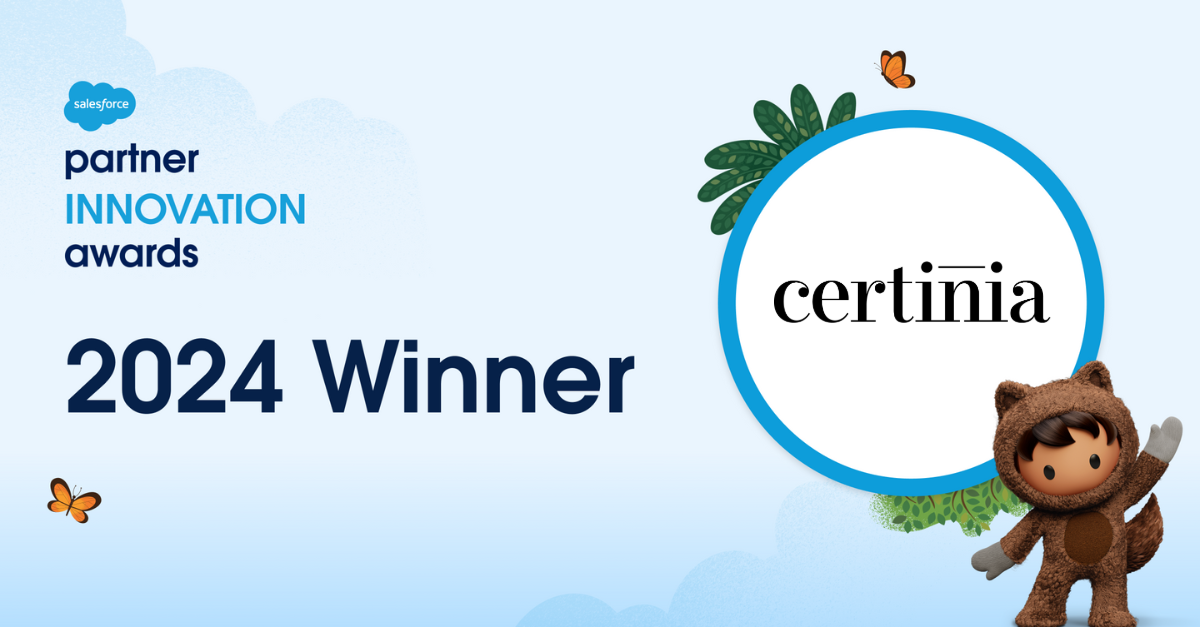Five ways to build a future-proof finance function
 This article is written by Yvette Ross, Director of Product Marketing with Certinia. Her goal is to help organizations understand the value of the right cloud platform and how it can help organizations run a most intelligent, agile, and connected business.
This article is written by Yvette Ross, Director of Product Marketing with Certinia. Her goal is to help organizations understand the value of the right cloud platform and how it can help organizations run a most intelligent, agile, and connected business.
As we begin a new year, I’m reflecting on how the roles of CFOs and finance leaders have become increasingly complex and multifaceted. The ability to manage financial risks, foster innovation, and lead high-performing teams through change is paramount.
That was a big takeaway from one of our recent webinars “Building a Future-Proof Finance Function: A CFO’s Eye View”, where I had the pleasure of hosting a conversation with Monica Engelhardt, CFO at Clearsulting, and Michael Kennedy, CFO and COO at the Muscular Dystrophy Association. Our discussion boiled down to five key ways you can build a future-proof finance function, which I’ve summarized below.
1: Embrace a comprehensive approach to service delivery
A central theme from our discussion was the need to embrace a more holistic approach in service delivery and finance management. This involves streamlining key business processes, ranging from initial customer interactions to final revenue recognition, within a unified system.
Interestingly, the majority of our audience prioritized finance processes and capabilities, followed by identifying growth opportunities and performance management. This reflects a trend where CFOs are not just risk mitigators but also catalysts for organizational innovation. As Michael Kennedy highlighted, the role of a CFO extends beyond cost management to being a strategic, thought-leading force within an organization.
2: Ensure there’s diversification and real-time data in risk management
Monica Engelhardt emphasized diversification in revenue streams as a critical element in financial risk management. At Clearsulting, this diversification, coupled with real-time data availability through platforms like Certinia, allows for accurate, up-to-date insights on both revenue and costs.
Michael Kennedy added the importance of rapid recovery strategies alongside prevention, underscoring the CFO’s role in crisis management:
If anything, the last couple years have taught us that risk can come out of anywhere and be quite challenging to an organization, even threaten an organization’s existence. At MDA, when the pandemic hit, we lost 60% of our fundraising revenue overnight. I was able to tell everybody, ‘Take your PCs, go home, and we can still do what we’re doing.’ But more importantly, I knew where our expenses were going and what would be impacted, and we were able to pivot pretty quickly both in our employee base and as well as where we could save some money very rapidly. I would say that was nothing short of saving the organization.
Michael Kennedy, MDA
3: Create a seamless integration of end-to-end processes
Both speakers agreed on the necessity of integrating end-to-end processes. A unified stream from customer interaction to financial forecasting is vital. Michael Kennedy shared how MDA’s adoption of a Salesforce platform with Certinia provided a comprehensive financial and operational system, linking processes like procurement to program management:
There are many applications out there that go module after module, but then you end up, like MDA was five years ago, with a number of systems that are not coordinated, not talking to each other. And if you really want to make a difference and you really want to be able to get out in front of risk, you need to look at this end-to-end processing. It’s not just about payables or fixed assets or any of the general ledger pieces. It’s looking at your entire organization. And from the moment you interact with a customer to the endpoint where you’re trying to forecast your next three months or six months, it has to be one stream. You’re in touch with the point of action, and that’s critical — that’s why you can achieve that with that single platform… You really feel you’re in control of what’s going on in your organization.
Michael Kennedy, MDA
4: Foster team innovation and adaptability
When it comes to building high-performing finance teams, one of the biggest challenges is managing change. Michael Kennedy and Monica Engelhardt shared insights on implementing new technology and training for change management. They emphasized the importance of having a team adaptable to change and innovation, which is crucial in today’s business climate.
5: Confidently measure cost management in proportion to revenue
Monica also touched upon cost management in relation to revenue. She emphasized the agility in managing costs, ensuring they are in proportion to the anticipated revenue. This approach supports a healthy P&L and cash flow, crucial for any thriving business.
We want to make sure the pace at which we’re spending our budget is tracking to the proportion of revenue we’re attaining toward our target… I would say, going into 2023, this was a year that we weren’t really sure how the market was going to perform. So we really doubled down on this approach of setting up our system to make sure we had a view of projected revenue that we are really comfortable with and successfully tracking our budget to how we are achieving our revenue target for the year… [For 2023] that’s how we really managed our financial risk just based on how the industry was performing and how we, in particular, were performing against our forecasts.
Monica Engelhardt, Clearsulting
Monica and Michael’s insights provide a roadmap for finance leaders to navigate these challenges. Integrating comprehensive platforms like Certinia and maintaining an agile, forward-thinking approach, can not only help finance functions adapt to the present — but also be well-prepared for future uncertainties.
Hungry for more knowledge? Learn almost a dozen things you can do by combining ERP + CRM in our ebook, “The Power of ERP on Salesforce”!





